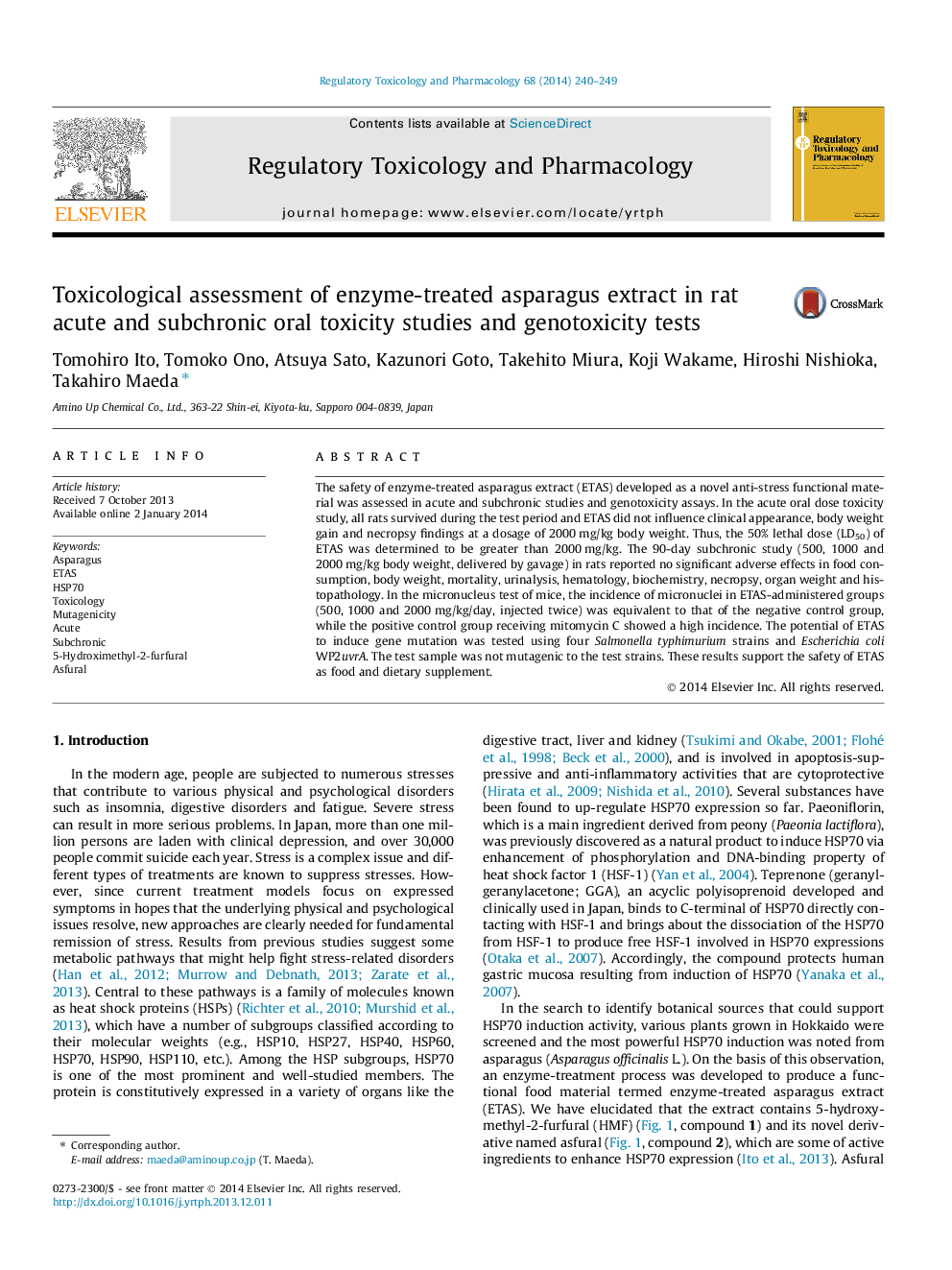| کد مقاله | کد نشریه | سال انتشار | مقاله انگلیسی | نسخه تمام متن |
|---|---|---|---|---|
| 5856760 | 1131982 | 2014 | 10 صفحه PDF | دانلود رایگان |
- We investigated to acute and subchlonic toxicities, and genotoxicity of ETAS.
- We revealed that ETAS has no toxicity that no toxicity is appeared in all test.
- These results support the safety of ETAS as food and dietary supplement.
The safety of enzyme-treated asparagus extract (ETAS) developed as a novel anti-stress functional material was assessed in acute and subchronic studies and genotoxicity assays. In the acute oral dose toxicity study, all rats survived during the test period and ETAS did not influence clinical appearance, body weight gain and necropsy findings at a dosage of 2000Â mg/kg body weight. Thus, the 50% lethal dose (LD50) of ETAS was determined to be greater than 2000Â mg/kg. The 90-day subchronic study (500, 1000 and 2000Â mg/kg body weight, delivered by gavage) in rats reported no significant adverse effects in food consumption, body weight, mortality, urinalysis, hematology, biochemistry, necropsy, organ weight and histopathology. In the micronucleus test of mice, the incidence of micronuclei in ETAS-administered groups (500, 1000 and 2000Â mg/kg/day, injected twice) was equivalent to that of the negative control group, while the positive control group receiving mitomycin C showed a high incidence. The potential of ETAS to induce gene mutation was tested using four Salmonella typhimurium strains and Escherichia coli WP2uvrA. The test sample was not mutagenic to the test strains. These results support the safety of ETAS as food and dietary supplement.
Journal: Regulatory Toxicology and Pharmacology - Volume 68, Issue 2, March 2014, Pages 240-249
